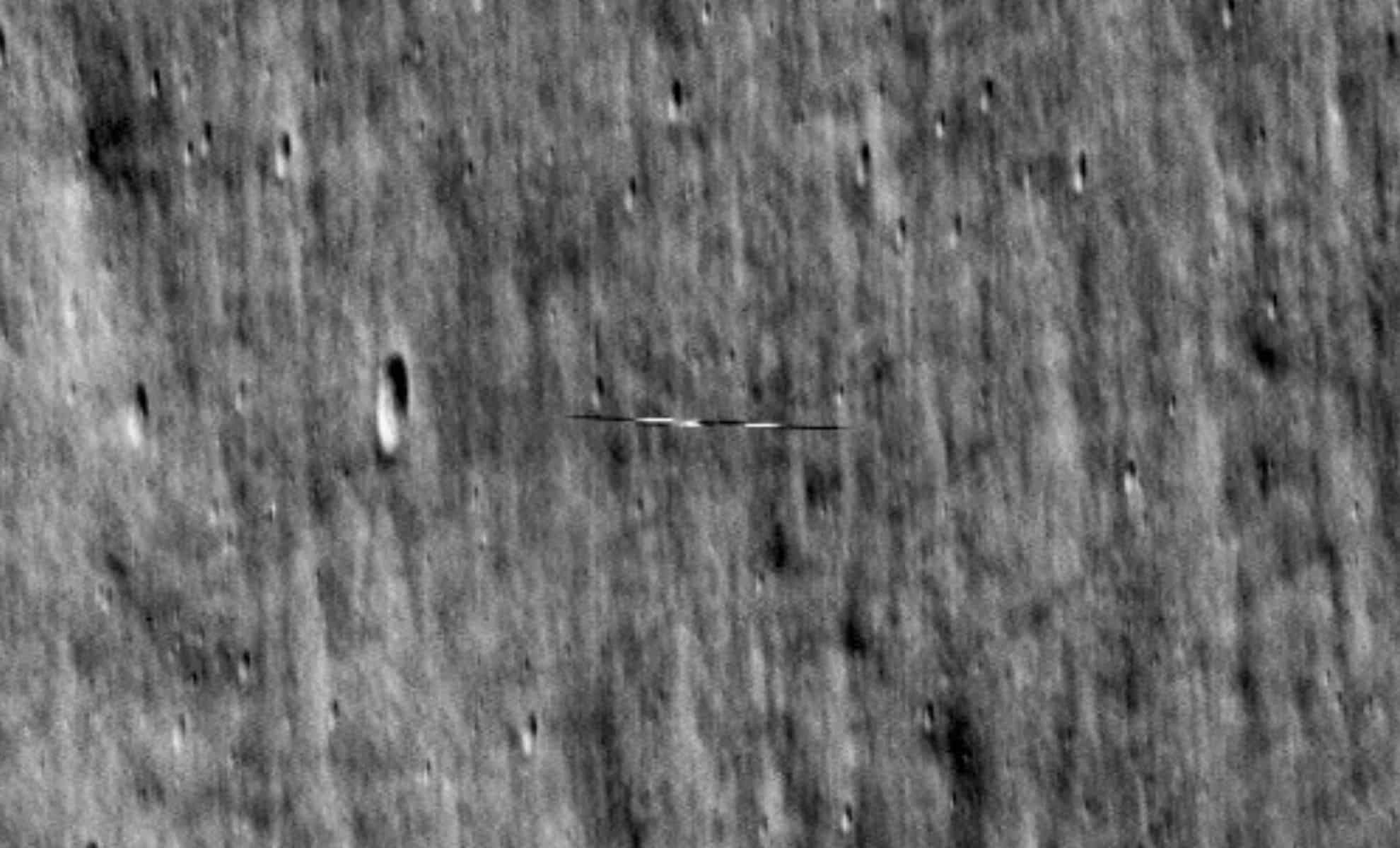
In an extraordinary cosmic event, NASA’s Lunar Reconnaissance Orbiter (LRO) successfully documented South Korea’s Danuri lunar orbiter during a close encounter in lunar orbit.
This significant event unfolded between March 5 and 6, 2024, with both spacecraft navigating nearly parallel paths but moving in opposite directions.
The striking images, released by NASA’s Goddard Space Flight Center alongside Arizona State University, showcase the precision and timing required for such an intricate photographic feat.
At a relative speed of 11,500 kilometers per hour (7,200 mph), LRO had mere milliseconds to capture Danuri within its frame.
Capturing Speed at 11,500 KM/H
Having been in lunar orbit since June 18, 2009, LRO was approximately 80 kilometers (50 miles) above the Moon’s surface during this encounter, while Danuri traveled 8 kilometers (5 miles) below it.
Even with an ultra-short exposure time of 0.338 milliseconds, the high-speed motion created a distortion effect, making Danuri appear elongated to nearly ten times its actual size in the raw imagery.
The photos were taken using the Lunar Reconnaissance Orbiter Camera (LROC), a state-of-the-art imaging system developed by Arizona State University.
As noted by Mark Robinson, the principal investigator for LROC, “Due to the extremely high relative speed, impeccable timing was crucial to successfully focus LROC on Danuri.”
The mission of LRO is managed by NASA’s Goddard Space Flight Center in Greenbelt, Maryland, on behalf of the Science Mission Directorate at NASA Headquarters in Washington, D.C.


Danuri’s Mission Goals and Imaging Capabilities
Danuri, also known as the Korea Pathfinder Lunar Orbiter (KPLO), marks South Korea’s inaugural lunar exploration mission. Developed by the Korea Aerospace Research Institute (KARI), it successfully entered lunar orbit in December 2022 following a four-month journey from Earth.
The primary mission objective is to create detailed maps of the Moon’s surface and search for water-ice deposits in the permanently shadowed craters near the lunar poles.
Equipped with a NASA-developed instrument called ShadowCam, Danuri boasts a sensitivity that is 200 times greater than LRO’s narrow-angle camera. In April 2023, Danuri aimed its ShadowCam at LRO, capturing images of the NASA spacecraft from an altitude of just 18 kilometers (11 miles).


The Complexities of Capturing Fast-Moving Spacecraft
Photographing spacecraft in lunar orbit is a highly intricate endeavor. The successful encounter between LRO and Danuri stands as a testament to the careful planning by NASA’s engineering team.
During one of the three imaging sessions, LRO tilted 43 degrees downward from its regular position to align its camera with Danuri’s flight path. In the subsequent encounter, LRO had to approach 2.5 miles (4 kilometers) nearer to Danuri, demanding even more precision.
Despite these meticulous efforts, NASA acknowledges that the resulting images exhibit considerable motion blur, an expected outcome when capturing swiftly moving objects in space.
Implications for Future Lunar Missions
This encounter underscores the increasing number of international lunar missions. Countries such as the United States, South Korea, India, China, Japan, and various private entities are significantly investing in lunar exploration.
NASA’s Artemis program, aimed at returning humans to the Moon in the near future, will depend on detailed lunar maps generated by missions like LRO and Danuri. South Korea’s long-range plan involves deploying a lunar lander by the early 2030s.
These spacecraft encounters, once viewed as rare phenomena, are likely to become a routine aspect of lunar exploration as an increasing number of robotic and crewed missions take to the Moon’s orbit.









